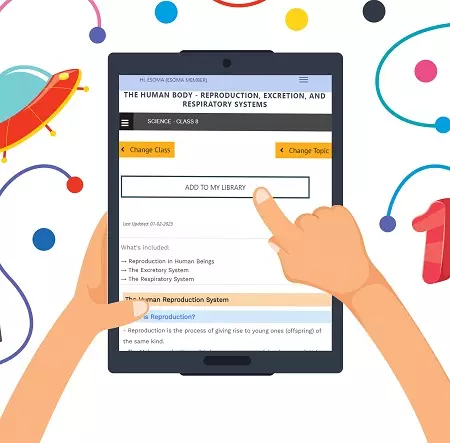Pollination
- The pollen grains land and stick onto the stigma.- The stigma secretes/produces a sticky chemical fluid that causes pollen grains to adhere to it.
- The sticky secretions also stimulate the pollen grain to germinate into a pollen tube.
- The pollen tube grows into the stigma and protrudes down the style tissues.
- The pollen tube derives its nutrition from the style tissues.
- As the tube grows downwards, the tube nucleus occupies the position just behind the tip.
- The generative nucleus then enters the tube; and divides mitotically to give a pair of male gamete nuclei, which follow the tube nucleus, as the pollen tube grows further down the style.
- On reaching the ovary the pollen tube enters the ovary via the micropyle.
- It then penetrates the embryo sac wall and bursts open.
- The tube (vegetative) nucleus then disintegrates, leaving a clear passage for the entry of the two male gamete nuclei.
Fertilization
- Fertilization takes place when one male gamete fuses with both polar nuclei to form a triploid nucleus called the primary endosperm nucleus.- The other male nucleus fuses with the functional egg cell to form a Diploid zygote.
- This is Double fertilization, a unique feature of flowering plants.
- After fertilization, a number of changes (post-fertilization changes) occur in the flower; Main changes include the following: -
- The zygote divides mitotically, growing and developing into an embryo.
- The embryo becomes differentiated into a radicle (embryonic root), plumule (embryonic shoot), and one or 2 cotyledons.
- The triploid primary endosperm nucleus divides mitotically to form endosperm, which surrounds the developing embryo and provides it with nourishment.
Seed and Fruit Formation
- The embryo sac expands to accommodate the developing and growing embryo.- The nucellus becomes crushed so that the embryo and endosperm come to fill the whole area inside the integuments.
- The ovules develop into the seed. The integuments become the seed coat (The outer integument becomes the testa and the inner integuments become the tegmen).
- The final transformation of the ovule into seed involves the removal of water from an initial 90% to the final 15% thus forming a dormant resistant structure that can withstand adverse conditions.
- The ovary develops into a fruit; this protects the seed and aids in dispersal.
- The ovary wall becomes the pericarp (wall of the fruit).
- Petals, stamen, style, and stigma wither, die, and fall off.

